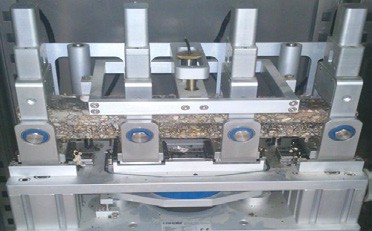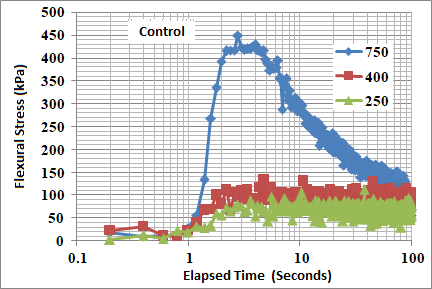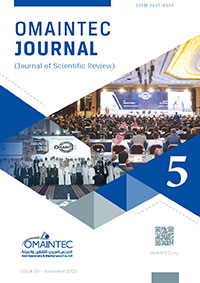Saad Issa Sarsam
Professor, Sarsam and Associates Consult Bureau (SACB), Baghdad, Iraq.
Former Head, Department of Civil Engineering, College of Engineering, University of Baghdad, Iraq. Email: saadisasarsam@coeng.uobaghdad.edu.iq
November 2022
Abstract #
Asphalt concrete pavement practices repeated flexural stresses caused by vehicular traffic throughout its service life. The resistance to such stresses could be enhanced by incorporation of Nano size additives for partial replacement of mineral filler. In the present investigation, an attempt has been made to introduce fly ash and Silica fumes into asphalt concrete mixture as partial substitute of mineral filler. Asphalt concrete slab samples were compacted in the laboratory at optimum binder content of 4.9 % using roller compaction. The optimum percentages of fly ash and Silica fumes are (4 and 2) % by weight of binder respectively. Beam specimens were extracted from the slab samples and subjected to dynamic flexural stresses with the aid of four points bending beam test under three constant microstrain levels of (250, 400, and 750). The change in the resistance of the mixtures to repeated flexural stresses was monitored through the elapsed time required for initiation of micro cracks. After 3 seconds of repeated loading, the flexural strength of the control asphalt concrete mixture was (450, 150, and 80) kPa under (750, 400, and 250) microstrain levels respectively. On the other hand, the flexural strength of asphalt concrete mixture treated with silica fumes was (720, 200, and 90) kPa under (750, 400, and 250) microstrain levels respectively. However, the flexural strength of asphalt concrete mixture treated with fly ash was (180, 110, and 75) kPa under (750, 400, and 250) microstrain levels respectively. It was concluded that implementation of silica fumes exhibit significant enhansement of high flexural strength as compared with the control or fly ash treated mixtures. Such Nano size additive is recommended to enhanse the sustainability of asphalt concrete.
Key Words
Nano Additives, Silica Fumes, Fly ash, Flexural Strength, Microstrain, Elapsed Time, Asphalt Concrete.
Introduction #
Kakar et al. 2019 demonstrated the significance of additive to improve the asphalt binder adhesion properties with aggregate. The addition of different fillers such as hydrated lime, fly ash, silica fume, cement, and bag-house fines are known to increase the rut resistance of asphalt mixture as stated by Bahia et al., 2001. Jie et al. 2017 addressed that the incorporation of additives can enhance the adhesion properties of the asphalt-aggregate interface. Sarsam, 2022 revealed that implementation of micro size additive (coal fly ash) exhibits longer fatigue life of asphalt concrete regardless of the microstrain level practiced by the mixture. However, asphalt concrete mixture treated with nano size additive (silica fumes) exhibits higher flexural stiffness of asphalt concrete regardless of the microstrain level practiced
by the mixture. Al-Mohammedawi and Mollenhauer, 2020 identified the influence of active fillers such as limestone, cement, ladle slag, and silica fume on the rheological properties and the resulting fatigue behavior of cold bitumen emulsion mastic. The assessment was supported by chemical analysis for the filler-bitumen emulsion. Bitumen emulsion was mixed separately with the fillers to prepare the mastics. Results show that the rheological performance and the fatigue damage resistance depend not only on the filler inclusions but also on filler type and chemistry. The viscoelastic properties of geopolymer grouting material with different content of silica fumes and fly ash are studied by Li et al., 2022. It was observed that the fly ash significantly increases the shear stress while the silica fumes reduce the shear stress. It was concluded that such additives exhibit higher chemical adhesion and specific surface area, respectively. Sarsam and Mashaan, 2022 reported that the fatigue life of asphalt concrete after incorporation of additives was monitored as under three constant micro strain levels of (250, 400, and 750). It was concluded that Fly ash exhibit lower susceptibility to long-term ageing process as compared to other mixtures, while silica fumes exhibit lower susceptibility to moisture damage as compared to other mixtures. Khan et al., 2020 investigated the effects of different fillers on some properties of asphalt concrete mixtures. Two filler types, silica fumes and marble dust were used to investigate the effect of filler/asphalt ratio on the characteristics of asphalt mixtures. It was concluded that the mixtures with 50% silica fume and 50% marble dust have greater stability than all the other percentages used in a Marshall mix. All other percentages of filler have lower stability and voids which are out of range. Mixture having 50% silica & 50% marble dust has only 13.5 mm flow value which is greater than all other percentages. Khodary, 2016 assessed the effect of silica fumes on the properties of asphalt concrete which was used for base course. Structure and morphology of the Silica fume were investigated by a series of laboratory experiments. Specimens with different modification levels of silica fume (2, 4, 6, 8 and 10) % by weight were tried. The test result revealed that adding silica fumes can improve both stability and strength. The addition of mineral fillers can significantly change the fatigue damage resistance and the rheological response of the mastic as reported by Lesueur et al., 2016. Underwood and Kim, 2011 reported that fillers strengthen the binder through the three main mechanisms of chemical interaction, particle geometry, and volume filling. The volume filling and particle geometry are considered as mechanical reinforcement, while volume filling is caused by adding more solid particles to the system, resulting in high stiffness. Onyelowe et al., 2020 investigated the influence of using fly ash as a modifier to enhance the mechanical properties of Asphalt for a sustainable pavement construction. The Marshall Stability behavior of the hot mix asphalt when mixed with fly ash was assessed. The results showed that the addition of fly ash of 15% by weight in the asphalt mixture was observed to have increased the stability by 3.7 %. It was concluded that incorporating fly ash in the asphalt concrete mixture had improved the rheological and performance characteristics while reducing cost and unfavorable environmental impacts. Buczy et al., 2017 stated that mineral fillers can be chemically grouped into active and inactive fillers, depending on their reactivity within bitumen emulsion. Limestone, which is considered as inert filler, is classified as inactive fillers because of the mineral composition and is usually employed as a stiffness regulator by adding solid particles to the binder matrix. As little or no chemical reaction is expected, it maintains the viscoelastic response. The aim of the present work is to assess the role of Nano Size Additives in enhancing the sustainability of asphalt concrete in terms of flexural strength. Silica fumes and fly ash will be implemented as partial substitute of filler in the asphalt concrete mixture. Specimens will be prepared at optimum binder and tested under dynamic flexural stresses. The change in the flexural strength will be monitored and compared.
Materials and Methods #
The materials implemented in this work are locally available and usually used for asphalt pavement construction.
Asphalt Cement #
Asphalt cement of penetration grad 40-50 was assessed in this work. It was obtained from AL-Nasiriya Refinery. Table 1 presents the physical properties of asphalt binder..
Table 1. Physical properties of asphalt cement
| Property | Testing condition | ASTM, 2015Designation No. | Value | SCRB, 2003Specifications |
| Penetration | 25°C, 100 gm 5 sec | D5-06 | 42 | 40-50 |
| Softening Point | (ring &ball) | D36-895 | 49 | – |
| Ductility | 25°C,5cm/mi | D113-99 | 100 + | >100 |
| Specific Gravity | 25˚C | D70 | 1.04 | – |
| After thin film oven test properties D1754-97 | ||||
| Penetration | 25°C, 100gm, 5 sec | D5-06 | 33 | – |
| Ductility of Residue | 25°C,5cm/mi | D113-99 | 83 | – |
Fine and Coarse Aggregates #
Crushed coarse aggregateswith a nominal maximum size of 19 mmand retained on sieve No. 4 was obtained from AL-Ukhaider quarry. The fine aggregates consist of crushed and natural sand mixture (passing sieve No.4 and retained on sieve No.200). It was obtained from the same source. The aggregates were washed, and then air dried and separated into different sizes by sieving. Table 2 present the physical properties of aggregates.
Table 2. Physical Properties of Coarse and Fine Aggregate
| Property | Value | ASTM, 2015, Designation No. |
| Coarse Aggregate | ||
| Bulk specific gravity | 2.542 | C127-01 |
| Water absorption % | 1.076% | C127-01 |
| Wear % (lose Angeles’s abrasion) | 18% | C131-03 |
| Fine Aggregate | ||
| Bulk specific gravity | 2.558 | C128-01 |
| Water absorption % | 1.83% | C128-01 |
Mineral Filler #
Limestone dust is implemented as mineral filler in the present investigation. It was obtained from Karbala governorate. The filler passes sieve No.200 (0.075mm). Table 3 present the physical properties of the mineral filler.
Table 3. Physical Properties of Mineral Filler (Limestone dust).
| Bulk specific gravity | % Passing Sieve No.200 |
| 2.617 | 94 |
Fly Ash #
Fly ash of class F was obtained from local market. Table 4 present the physical properties of fly ash, while the chemical composition of Fly Ash is listed in Table 5.
Table 4. Physical Properties of Fly Ash
| Maximum Sieve size (micron) | % passing | Specific gravity | Specific surface area (m2/kg) |
| 0.075 | 98 | 2.645 | 650 |
Table 5. Chemical Composition of Fly Ash
| Chemical composition | Percent | ASTM C-618, 2015 Requirement (%) |
| SiO2 | 61.95 | ………. |
| Fe2O3 | 2.67 | ………… |
| Al2O3 | 28.82 | ………… |
| CaO | 0.88 | …………. |
| MgO | 0.34 | 5.0 max |
| Na2O | 0.26 | 1.5 max |
| Loss on ignition | 0.86 | 6.0 max |
Silica Fumes #
Silica fumes were obtained from local market as a fluffy powder, Table 6 presents its physical properties, while Table 7 shows the chemical composition of the Silica fumes.
Table 6. Physical Properties of Silica Fumes
| Maximum sieve size | PH value | Density (kg/m3) | Specific surface area (m2/kg) |
| Passing sieve (0.075 mm) | 4.5 | 2.6455 | 200000 |
Table 7. Chemical Components of Silica Fumes
| Chemical Composition | Percent |
| SiO2 | 99.1 |
| Fe2O3 | 35.0 P.P.M |
| Al2O3 | <o.o35 |
| TiO2 | <0.006 |
| CaO2 | 0.03 |
| MgO | 52.0 P.P.M |
| SO3 | <0.07 |
| Loss on ignition | 0.7 |
Selection of Aggregate Gradation for Asphalt Concrete #
The selected aggregates gradation in the present investigation follows SCRB, 2003 specification for dense graded wearing course pavement layer. It has 12.5 mm nominal maximum size of aggregates. Table 8 shows the selected aggregate gradation.
Table 8. Gradation of Aggregate for Wearing Course as per SCRB, 2003
| Sieve size (mm) | 19 | 12.5 | 9.5 | 4.75 | 2.36 | 0.3 | 0.75 |
| Selected gradation | 100 | 95 | 83 | 59 | 43 | 13 | 7 |
| SCRB, 2003 Specification limits | 100 | 90-100 | 76-90 | 44-74 | 28-58 | 5-12 | 4-10 |
Preparation of Modified Asphalt Cement #
Modified asphalt cement binder is prepared by using the wet process. In the wet process, asphalt cement was heated to 150°C and then the fly ash or silica fumes were added in powder form using various percentages of each additive. The mixture was blended in a mixer at a blending speed of about 1300 rpm and the mixing temperatures of 160°C was maintained for 20 minutes to promote the chemical and physical bonding of the components. The optimum percentages of fly ash and Silica fumes are (4 and 2) % by weight of binder respectively. Details of the mixing procedure and selection of the optimum percentages could be found in Sarsam and Al-Lamy, 2015.
Preparation of Asphalt Concrete Mixture and Specimens #
The fine and coarse aggregates were combined with mineral filler to meet the specified gradation for wearing course. The combined aggregates were then heated to 160ºC before mixing with asphalt cement. The asphalt cement or the modified asphalt binder was heated to 150ºC to produce a kinematic viscosity of (170±20) centistokes as recommended by SCRB, 2003. Then, the binder was added to the heated aggregate to achieve the desired amount and mixed thoroughly by hand using a spatula for two minutes until all aggregate particles were coated with thin film of the asphalt binder. The optimum asphalt content of 4.9% was implemented. The optimum binder percentage was determined based on Marshall Trial mixes using various asphalt percentages. Details of obtaining the optimum binder content could be found in Sarsam and Al-Lamy, 2016. The asphalt concrete mixtures were casted in a slab mold of (400 × 300 × 60) mm and subjected to roller compaction to the target bulk density for each binder type according to EN12697-33, 2007. The applied static load was 5 kN while the number of load passes depended on the asphalt type in mixture and was determined based on trial-and-error process. Details of the compaction process could be referred to Sarsam, 2005. The compaction temperature was maintained to 150°C. Slab samples were left to cool overnight. Beam specimens of 50±2 mm high, 63±2 mm wide and 400 mm length were obtained from the compacted slab sample using the diamond-saw. The total number of beam specimens obtained was twelve, while the number of casted slabs was three.
Repeated Flexural Bending Beam Test #
The four-point repeated flexural bending beam test according to AASHTO T321, 2010 was implemented to identify the influence of additives on the fatigue life of asphalt concrete beam specimens at intermediate pavement operating temperature of 20°C and under three types of constant strain level, (250, 400, and 750) microstrain. The various microstrain levels were tried to simulate various modes of loading in the field. During the flexural fatigue test, the beam is subjected to repeated four-point loading. The load frequency is usually set to 5 Hz. A repeated haversine (sinusoidal) load is applied to the two inner clamps on the beam specimen with the outer clamps providing a reaction load. This setup produces a constant bending moment over the center portion of the beam (between the two inside clamps). Beams were subjected to a repeated flexural bending load. Figure 1 demonstrates the four-point flexural bending test setup.

Figure 1. Four points flexural bending test setup.
Results and Discussion #
Influence of Microstrain Level on the Flexural Strength
Figure 2 demonstrates the variation in the flexural strength of asphalt concrete beam specimens at the early stages of practicing the repeated flexural stresses. The resistance of the mixture to the applied stresses increases sharply after one second and reaches its peak values, then decline as the loading proceeds.

Figure 2. Variation of flexural strength under various microstrain levels of control mixture
This could be attributed to the initiation of micro cracks after reaching and exceeding the endurance capacity of the mixture to resist the stresses. Higher resistance to the flexural stresses could be noticed at higher microstrain level of 750. However, the variation in the flexural strength is limited after 100 seconds as demonstrated in the Figure. After 3 seconds of repeated loading, the flexural strength of asphalt concrete mixture was (450, 150, and 80) kPa under (750, 400, and 250) microstrain levels respectively. On the other hand, after 100 seconds of load repetitions, the flexural strength declines to (140, 100, and 70) kPa under (750, 400, and 250) microstrain levels respectively. Such behavior was in aggrement with the work reported by Sarsam, 2022.
Influence of Silica Fumes on Flexural Strength
Figure 3 exhibits the variation of flexural strength under various microstrain levels of silica fumes treated mixture. Similar trend of flexural strength among the microstrain levels could be observed. However, the implication of silica fumes additive exhibit higher flexural strength of asphalt concrete as compared with the control mixture. This may be attributed to the fact that the Nano size additive can fill more voids and exhibit stiffer mastic in the asphalt concrete mixture. After 3 seconds of repeated loading, the flexural strength of asphalt concrete mixture was (720, 200, and 90) kPa under (750, 400, and 250) microstrain levels respectively. On the other hand, after 100 seconds of load repetitions, the flexural strength declines to (160, 120, and 100) kPa under (750, 400, and 250) microstrain levels respectively. It can be revealed that implication of silica fumes into the asphalt concrete mixture as particial substitute of the filler had improved the flexural strength by (60, 33.3, and 12.5) % under (750, 400, and 250) microstrain levels respectively. Similar finding was reported by Khan et al., 2020.

Figure 3. Variation of flexural strength under various microstrain levels of silica fumes treated mixture
Influence of Fly Ash on Flexural Strength #
Figure 4 demonstrates the variation of flexural strength under various microstrain levels of Fly Ash treated mixture. The trend of change in the flexural strength was the same as that of the control or the silica fumes treated mixtures. After 3 seconds of repeated loading, the flexural strength of asphalt concrete mixture was (180, 110, and 75) kPa under (750, 400, and 250) microstrain levels respectively. On the other hand, after 100 seconds of load repetitions, the flexural strength declines to (100, 80, and 60) kPa under (750, 400, and 250) microstrain levels respectively. It can be revealed that implication of Fly Ash into the asphalt concrete mixture as particial substitute of the filler causes decline of the flexural strength by (60, 26.6, and 6.2) % under (750, 400, and 250) microstrain levels respectively. Such behavior agree with Li et al., 2022.

Figure 4. Variation of flexural strength under various microstrain levels of Fly Ash treated mixture
Conclusions #
The following conclusions could be addressed based on the limitations of materials and testing program.
- For control mixture, the flexural strength of asphalt concrete mixture was (450, 150, and 80) kPa under (750, 400, and 250) microstrain levels respectively after 3 seconds of repeated loading. On the other hand, after 100 seconds of load repetitions, the flexural strength declines to (140, 100, and 70) kPa under (750, 400, and 250) microstrain levels respectively.
- Implication of silica fumes into the asphalt concrete mixture as particial substitute of the filler had improved the flexural strength by (60, 33.3, and 12.5) % under (750, 400, and 250) microstrain levels respectively.
- Implication of Fly Ash into the asphalt concrete mixture as particial substitute of the filler causes decline of the flexural strength by (60, 26.6, and 6.2) % under (750, 400, and 250) microstrain levels respectively.
- Implication of Nano size additive as partial substitute of mineral filler is recommended to enhanse the sustainability of asphalt concrete.
References #
- Kakar, M., Hamzah, M., Akhtar, M. and Saleh, J. 2019. Evaluating the surface free energy and moisture sensitivity of warm mix asphalt binders using dynamic contact angle. Hindawi Advances in Civil Engineering, Article ID 9153603, 15 pages. http:// doi.org/10.1155/2019/9153603.
- Bahia, H., Hanson D. I., Zeng M., Zhai H., Khatri M., and Anderson R. 2001. Characterization of modified asphalt binders in Superpave mix design. No. Project 9-10 FY’96.
- Jie, J., Yao, H., Liu, L., Suo, Z., Zhai, P., Yang, X. and You, Z. 2017. Adhesion evaluation of asphalt-aggregate interface using surface free energy method. Appl. Sci. 7: 156. doi:10.3390/app7020156. www.mdpi. com/ journal/applsci.
- Sarsam S. I. 2022. Influence of micro and Nano size additives and microstrain level on flexural stiffness of asphalt concrete. Novel Approaches in Urban Engineering Volume 1 Issue 2. CR Subscription.
- Al-Mohammedawi A. and Mollenhauer K. 2020. A study on the influence of the chemical nature of fillers on rheological and fatigue behavior of bitumen emulsion mastic. Materials, 13, 4627; 2020. MDPI. doi:10.3390/ma13204627. www.mdpi.com/journal/materials.
- Li L., Wei Y., Li Z., Farooqi M. 2022.Rheological and viscoelastic characterizations of fly ash/slag/silica fume-based geopolymer. Journal of Cleaner Production. Elsevier, Volume 354, 20 June. https://doi. org/10.1016/j.jclepro.2022.131629.
- Sarsam S. I., and Mashaan N. 2022. Detecting the influence of additives on asphalt concrete durability. January 2022. DOI: 10.17576/jkukm-34(1)-05.
- Khan A.A., Ullah N., Ahmad A., Ali S. 2020. Evaluation of mechanical properties of hot mix asphalt by replacing the combination of marble dust and silica fume as a filler. GSJ: Volume 8, Issue 9, September. P.681-690. www.globalscientificjournal.com.
- Khodary F. 2016. Impact of Silica fumes on the properties of Asphalt pavement base course. International Journal of Engineering Trends and Technology (IJETT) – Volume 35 Number 10 – May. P. 487. http://www. ijettjournal.org.
- Lesueur, D.; Teixeira, A.; Lázaro, M.M.; Andaluz, D.; Ruiz, A. 2016. A simple test method in order to assess the effect of mineral fillers on bitumen ageing. Constr. Build. Mater. 117, P. 182–189. https://doi.org/10.1016/j. conbuildmat.2016.05.003.
- Underwood, B.S.; Kim, Y.R. 2011. Experimental investigation into the multiscale behavior of asphalt concrete. Int. J. Pavement Eng. 12. 357–370. https://doi.org/10.1080/10298436.2011.574136.
- Onyelowe K., Onyia M., Onukwugha E., Ikpa C. 2020. Mechanical properties of fly ash modified asphalt treated with crushed waste glasses as fillers for sustainable pavements. Epitoanyag-Journal of Silicate Based and Composite Materials 72(6): P. 219-222. DOI: 10.14382/epitoanyag-jsbcm.2020.35.
- Buczy´ nski, P.; Iwa´ nski, M. 2017. Inactive Mineral Filler as a Stiffness Modulus Regulator in Foamed Bitumen-Modified Recycled Base Layers. IOP Conf. Ser. Mater. Sci. Eng. 245, 032042.. doi:10.1088/1757- 899X/245/3/032042.
- ASTM, 2015. Road and Paving Materials, Annual Book of ASTM Standards, Volume 04.03, American Society for Testing and Materials, West Conshohocken, USA.
- SCRB. 2003. State Commission of Roads and Bridges. Standard Specification for Roads & Bridges, Ministry of Housing & Construction, Iraq.
- Sarsam S.I. and AL-Lamy A.K. 2015. Fatigue life assessment of Modified Asphalt Concrete. International Journal of Scientific Research in Knowledge, 3(2). P. 030-041. http://dx.doi.org/10.12983/ijsrk- 2015-p0030-0041.
- Sarsam S.I., AL-Lamy A.K. 2016. Fatigue behaviour of modified asphalt concrete pavement, Journal of Engineering, 22 (2).
- EN 12697 – 33. 2007. Bituminous Mixtures – Test Methods for Hot Mix Asphalt – part 33: Specimen prepared by Roller Compactor. European Committee for Standardization.
- Sarsam S. I. 2005. Flexural and Cracking Behaviour of Roller Compacted Asphalt Concrete, Journal of Engineering and Development, 9(4).
- AASHTO T-321. 2010. Method for Determining the Fatigue Life of Compacted Hot-Mix Asphalt (HMA) Subjected to Repeated Flexural Bending, AASHTO Provisional Standards. Washington, D.C.







